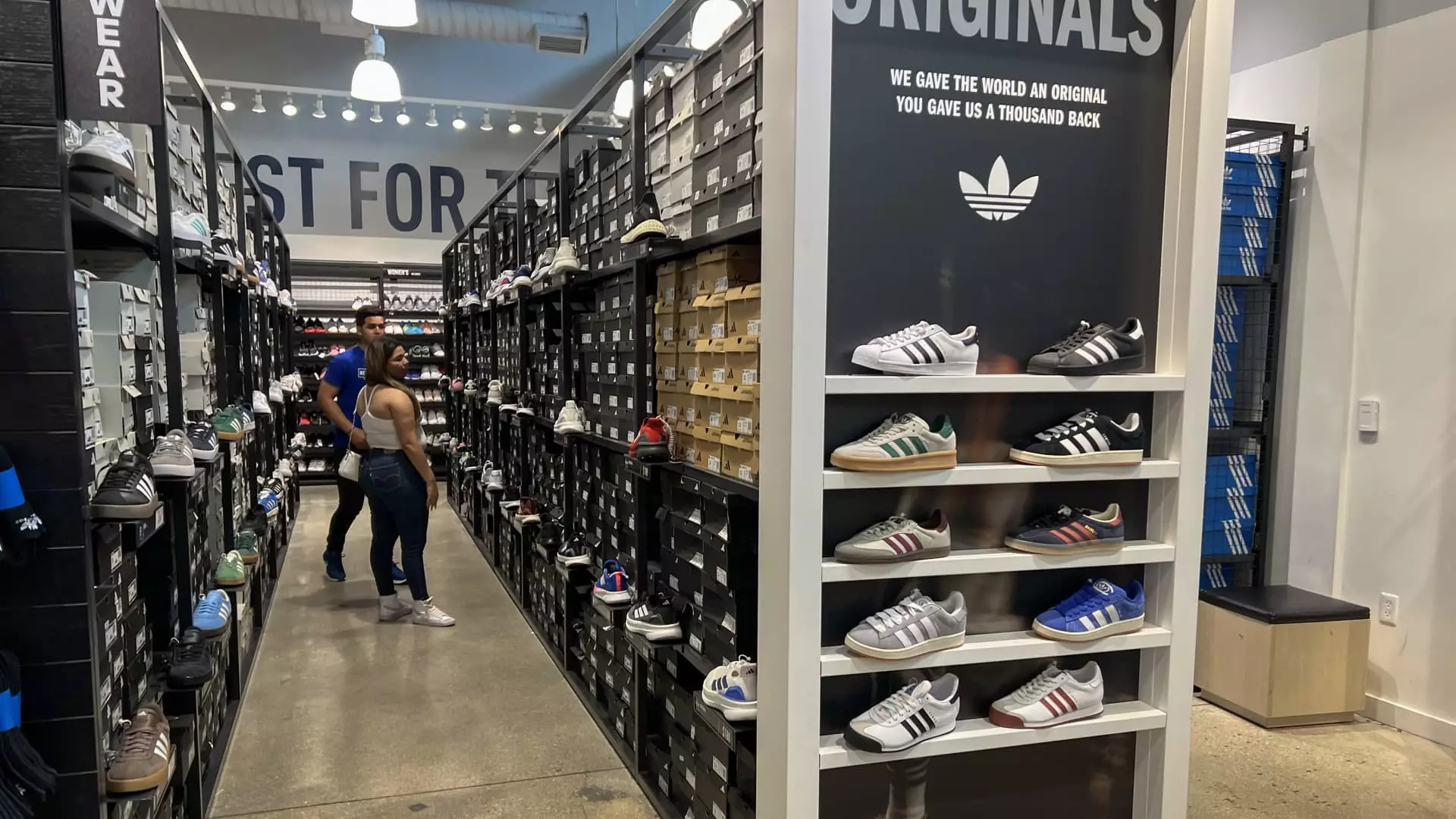The sportswear industry is facing a significant upheaval, largely stemming from U.S. President Donald Trump’s tariffs. Adidas, the renowned sportswear giant, has made clear that the escalating tariffs will inevitably lead to increased prices for its American consumers. Not only does this indicate growing costs for Adidas products, but it raises alarming questions regarding the sustainability of consumer demand in such a contentious climate. The profits from a robust first quarter seem overshadowed by the uncertainty created by the ongoing trade disputes. If that were not enough, the very essence of Adidas’ pricing strategy is under threat, leading to an unsettling forecast for the future of retail in America.
This price hike predicament is described by Adidas as a painful reality for the U.S. market and reflects the broader challenges businesses face globally. With tariffs on products sourced from China soaring to an alarming 145%, the company has already made preemptive cuts in its exports from the country. Yet, the true dagger to Adidas’ finances is not merely the tariffs on Chinese goods but the sweeping increases affecting imports from everywhere else. With non-Chinese goods currently subjected to a nominal 10% tariff, the specter of potential escalations hangs over the company like a sword of Damocles.
The Uncertainties in Negotiation: A Retailer’s Nightmare
Adidas has openly voiced its frustration with the ambiguity surrounding U.S. tariffs. In a bold statement, they asserted: “Given the uncertainty around the negotiations between the US and the different exporting countries, we do not know what the final tariffs will be.” This incessant uncertainty is not just an inconvenience; it is an existential crisis that could upend entire retail landscapes. The company’s inability to finalize pricing strategies leaves it in a precarious position, impeded from fully capitalizing on what would have been a fruitful year.
The next critical piece of the puzzle lies in Adidas’ supply chain. The stark reality is that a substantial portion of its products is manufactured in Southeast Asia, in countries like Vietnam and Cambodia, which face punitive tariffs that could soar to more than 40%. This not only restricts the company’s ability to navigate cost increases but also stifles its innovation and operational flexibility. As retail giant after retail giant struggles with similar dilemmas, we are reminded that Adidas is merely a bellwether of a larger malaise gripping the American retail sector.
Consumer Sentiment: A Tenuous Balancing Act
Perhaps the most detrimental impact of these tariff policies is the potential shift in consumer sentiment. As costs rise, the average American consumer may begin to recoil from making luxury or even necessary purchases. Adidas themselves admit, “it is impossible to quantify” the cascading effects of these price hikes on consumer demand. This uncertainty is meta-cognitively frustrating; companies cannot make informed decisions without understanding the psychological thresholds of their customers.
Similarly, industry analysts have noted a promising performance in net income and sales for Adidas. Yet, how sustainable is this growth in the face of external pressures? The cautious optimism encapsulated in Adidas’ assessment reveals not just the company’s strategic mindset but the precarious balance between operational achievements and looming economic threats. As these performance metrics fluctuate amidst tariff uncertainties, one can’t help but wonder whether recent successes can withstand the impending tides of change.
From Ye to Unyielding Tariffs: Turbulent Times for Retail Giants
Adidas’ recent struggles are compounded by the fallout of its controversial collaborations, most notably with the artist Ye, whose divisive comments led to a severing of ties. While the company has seemingly moved past this crisis, the ongoing tumult with U.S. tariffs poses a new, perhaps graver threat. With retail giants stretching their arms across a constantly shifting framework of international trade policies, Adidas is left clinging to the hopes of a strong order book while grappling with a myriad of unknowns.
The retail sector must adapt in these turbulent times, recalibrating its strategies while contending with governmental policies that seem unpredictable at best. As the industry lurches forward, it becomes increasingly important for companies like Adidas to rethink their business models in light of these drastic elements. Tariffs can potentially alter the landscape in a way that some might argue is simply unsustainable. The question remains: will innovation and consumer demand rise above the chaos, or will they succumb to the unyielding pressures of this new economic reality?

